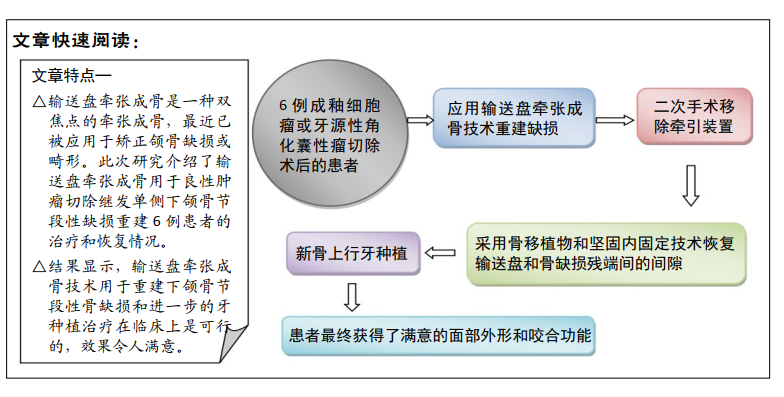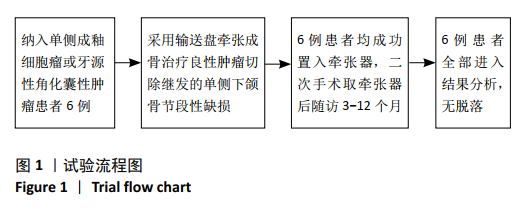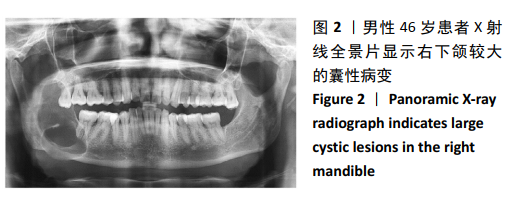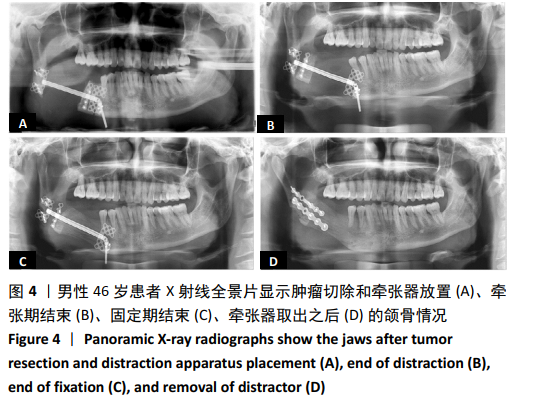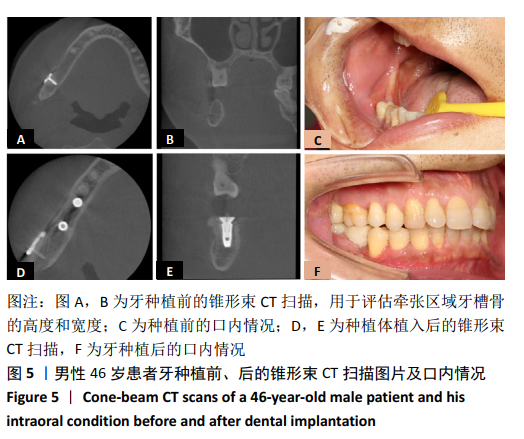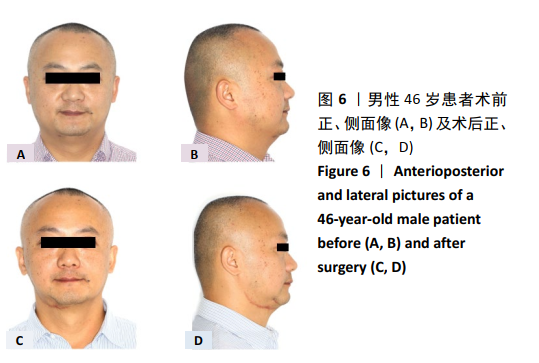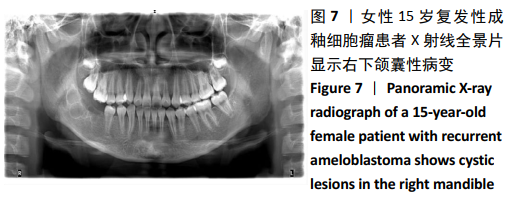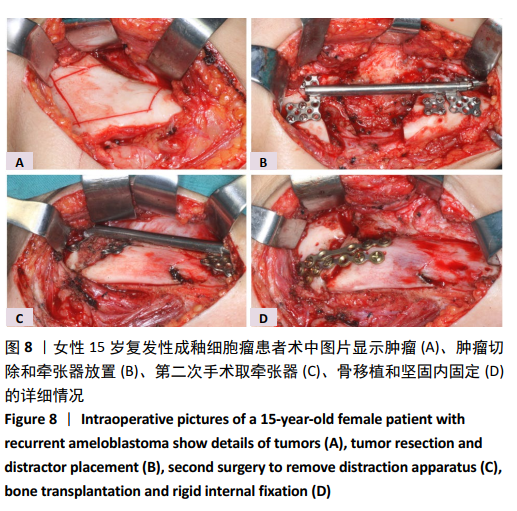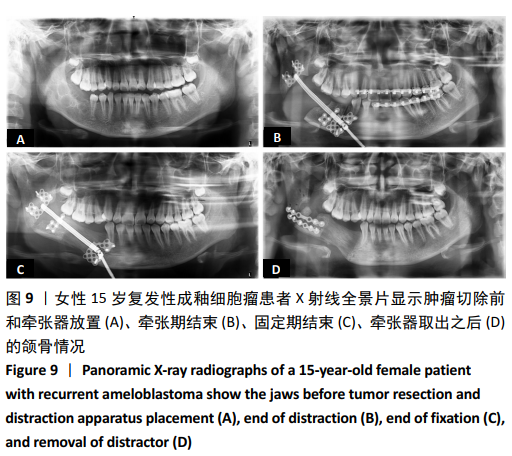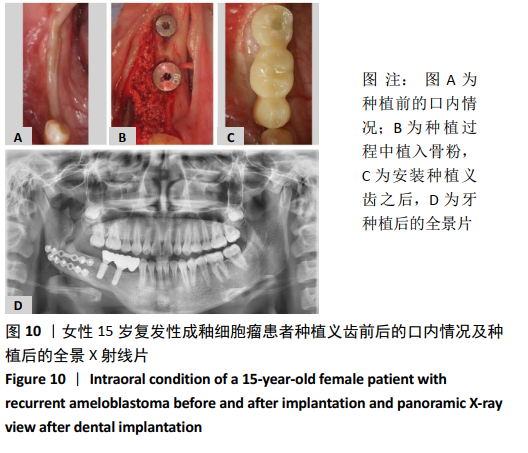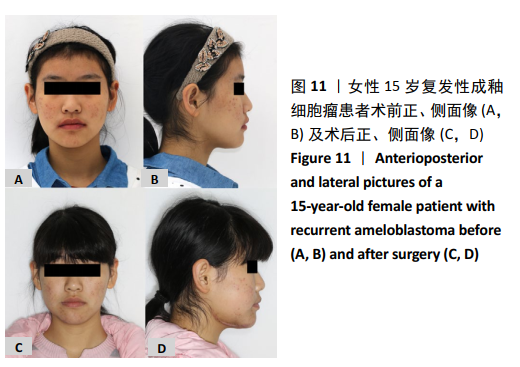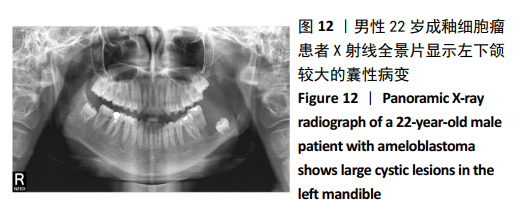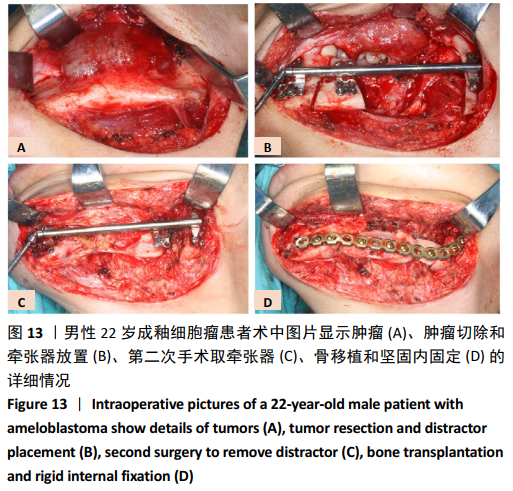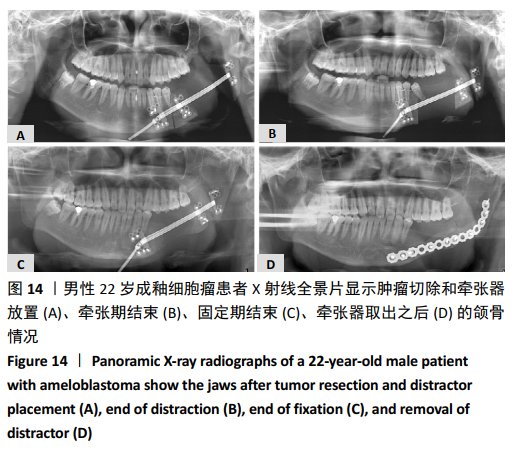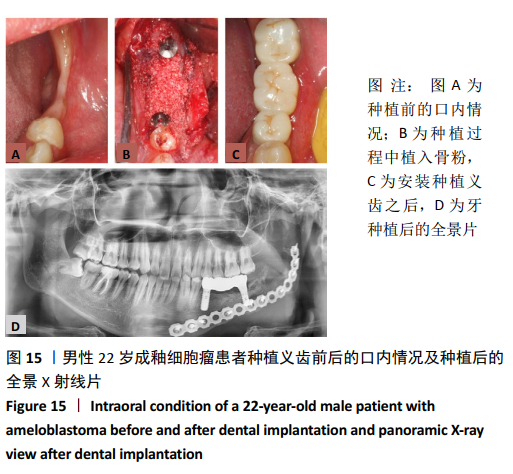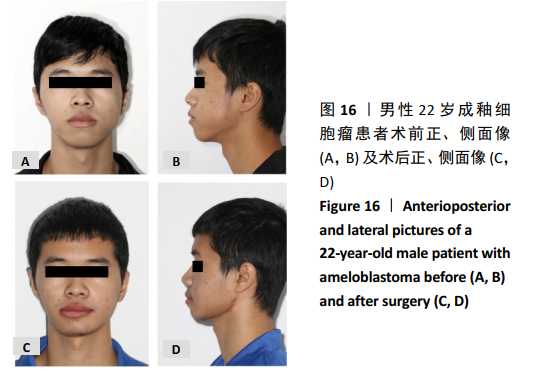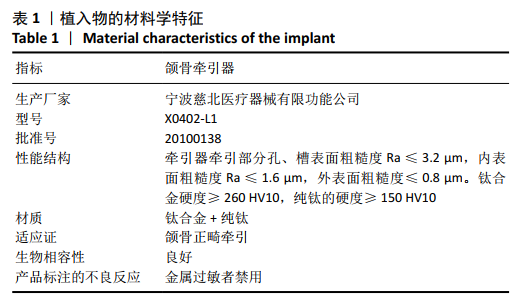[1] KUMAR BP, VENKATESH V, KUMAR KA, et al. Mandibular Reconstruction: Overview. J Maxillofac Oral Surg. 2016;15(4):425-441.
[2] AL-NAWAS B, SCHIEGNITZ E. Augmentation procedures using bone substitute materials or autogenous bone - a systematic review and meta-analysis. Eur J Oral Implantol. 2014;7 Suppl 2:S219-234.
[3] MCCARTHY JG, SCHREIBER J, KARP N, et al. Lengthening the human mandible by gradual distraction. Plast Reconstr Surg. 1992;89(1):1-8;discussion 9-10.
[4] GLAT PM, STAFFENBERG DA, KARP NS, et al. Multidimensional distraction osteogenesis: the canine zygoma. Plast Reconstr Surg. 1994;94(6):753-758.
[5] BASA S, UNER E, CITIR M, et al. Reconstruction of a large mandibular defect by distraction osteogenesis: a case report. J Oral Maxillofac Surg. 2000;58(12):1425-1428.
[6] SANTAMARÍA E, MORALES C, TAYLOR JA, et al. Mandibular microsurgical reconstruction in patients with hemifacial microsomia. Plast Reconstr Surg. 2008; 122(6):1839-1849.
[7] KIM SM, PARK JM, MYOUNG H, et al. Transport disc distraction osteogenesis as an alternative protocol for mandibular reconstruction. J Plast Reconstr Aesthet Surg. 2010;63(8):e644-646.
[8] LIU Y, CHEN J, YAN F, et al. Mandible reconstruction with transport-disc distraction osteogenesis in children of deciduous dentition. Int J Oral Maxillofac Surg. 2012; 41(10):1223-1228.
[9] HIROTA M, CHIKUMARU H, MATSUI Y, et al. Osteosynthesis and simultaneous irregular trifocal distraction osteogenesis for segmental mandibular defect after tumor ablative surgery: a case report. Oral Surg Oral Med Oral Pathol Oral Radiol Endod. 2008;106(5):651-655.
[10] ELSALANTY ME, TAHER TN, ZAKHARY IE, et al. Reconstruction of large mandibular bone and soft-tissue defect using bone transport distraction osteogenesis. J Craniofac Surg. 2007;18(6):1397-1402.
[11] ELSALANTY ME, MALAVIA V, ZAKHARY I, et al. Dentate transport discs can be used to reconstruct large segmental mandibular defects. J Oral Maxillofac Surg. 2015;73(4):745-58.
[12] 余和东,陈永吉,毛敏,等.聚醚醚酮/双相生物陶瓷复合材料包裹血管内皮生长因子修复下颌骨缺损[J].中国组织工程研究,2019,23(2):184-189.
[13] 廖锋,刘士博,刘瑶,等.重组人骨保护素抑制破骨细胞及促进羟磷灰石修复去势大鼠下颌骨缺损的研究[J].华西口腔医学杂志,2018,36(4):367-371.
[14] YAMAMOTO N, HAYASHI K, TSUCHIYA H. Progress in biological reconstruction and enhanced bone revitalization for bone defects. J Orthop Sci. 2019;24(3):387-392.
[15] PARÉ A, BOSSARD A, LAURE B, et al. Reconstruction of segmental mandibular defects: Current procedures and perspectives. Laryngoscope Investig Otolaryngol. 2019;4(6):587-596.
[16] 陈金勇,蒋校文,杨孝勤,等.小鼠骨髓间充质细胞在牵张力作用下骨膜蛋白的表达及作用[J].北京口腔医学,2018,26(5):260-264.
[17] SONG D, XU P, LIU S, et al. Dental pulp stem cells expressing SIRT1 improve new bone formation during distraction osteogenesis. Am J Transl Res. 2019;11(2):832-843.
[18] SONG J, YE B, LIU H, et al. Fak-Mapk, Hippo and Wnt signalling pathway expression and regulation in distraction osteogenesis. Cell Prolif. 2018;51(4):e12453.
[19] Liu W, He HB, Zhang C, et al. Distraction-suppression effect on osteosarcoma. Med Hypotheses. 2018;121:4-5.
[20] CASTRO-NÚÑEZ J. Distraction Sugosteogenesis: Its Biologic Bases and Therapeutic Principles. J Craniofac Surg. 2018;29(8):2088-2095.
[21] AKINBAMI BO. Reconstruction of Continuity Defects of the Mandible with Non-vascularized Bone Grafts. Systematic Literature Review. Craniomaxillofac Trauma Reconstr. 2016;9(3):195-205.
[22] CHEUNG LK, CHUA HD, HARIRI F, et al. Alveolar distraction osteogenesis for dental implant rehabilitation following fibular reconstruction: a case series. J Oral Maxillofac Surg. 2013;71(2):255-271.
[23] CAO J, ZHANG S, GUPTA A, et al. Sensory Nerves Affect Bone Regeneration in Rabbit Mandibular Distraction Osteogenesis. Int J Med Sci. 2019;16(6):831-837.
[24] MORILLO CMR, SLONIAK MC, GONÇALVES F, et al. Efficacy of stem cells on bone consolidation of distraction osteogenesis in animal models: a systematic review. Braz Oral Res. 2018;32:e83.
[25] SCHLUND M, TOUZET-ROUMAZEILLE S, NICOT R, et al. Temporomandibular Joint Ankylosis Following Mandibular Distraction Osteogenesis: A Dreadful Complication. J Craniofac Surg. 2020;31(1):222-225.
[26] BELCHER RH, PHILLIPS JD. Total facial nerve injury during mandibular distraction osteogenesis. Int J Pediatr Otorhinolaryngol. 2020;136:110182.
[27] HANY HE, EL HADIDI YN, SLEEM H, et al. Novel Technique and Step-by-Step Construction of a Computer-Guided Stent for Mandibular Distraction Osteogenesis. J Craniofac Surg. 2019;30(7):2271-2274.
[28] HATEFI S, HATEFI K, LE ROUX F, et al. Review of automatic continuous distraction osteogenesis devices for mandibular reconstruction applications. Biomed Eng Online. 2020;19(1):17.
[29] SAHOO NK, ISSAR Y, THAKRAL A. Mandibular Distraction Osteogenesis. J Craniofac Surg. 2019;30(8):e743-e746.
[30] GONZÁLEZ-GARCÍA R, NAVAL-GÍAS L, RUBIO-BUENO P, et al. Double-step transport osteogenesis in the reconstruction of mandibular segmental defects: a new surgical technique. Plast Reconstr Surg. 2006;118(7):1608-1612. |
